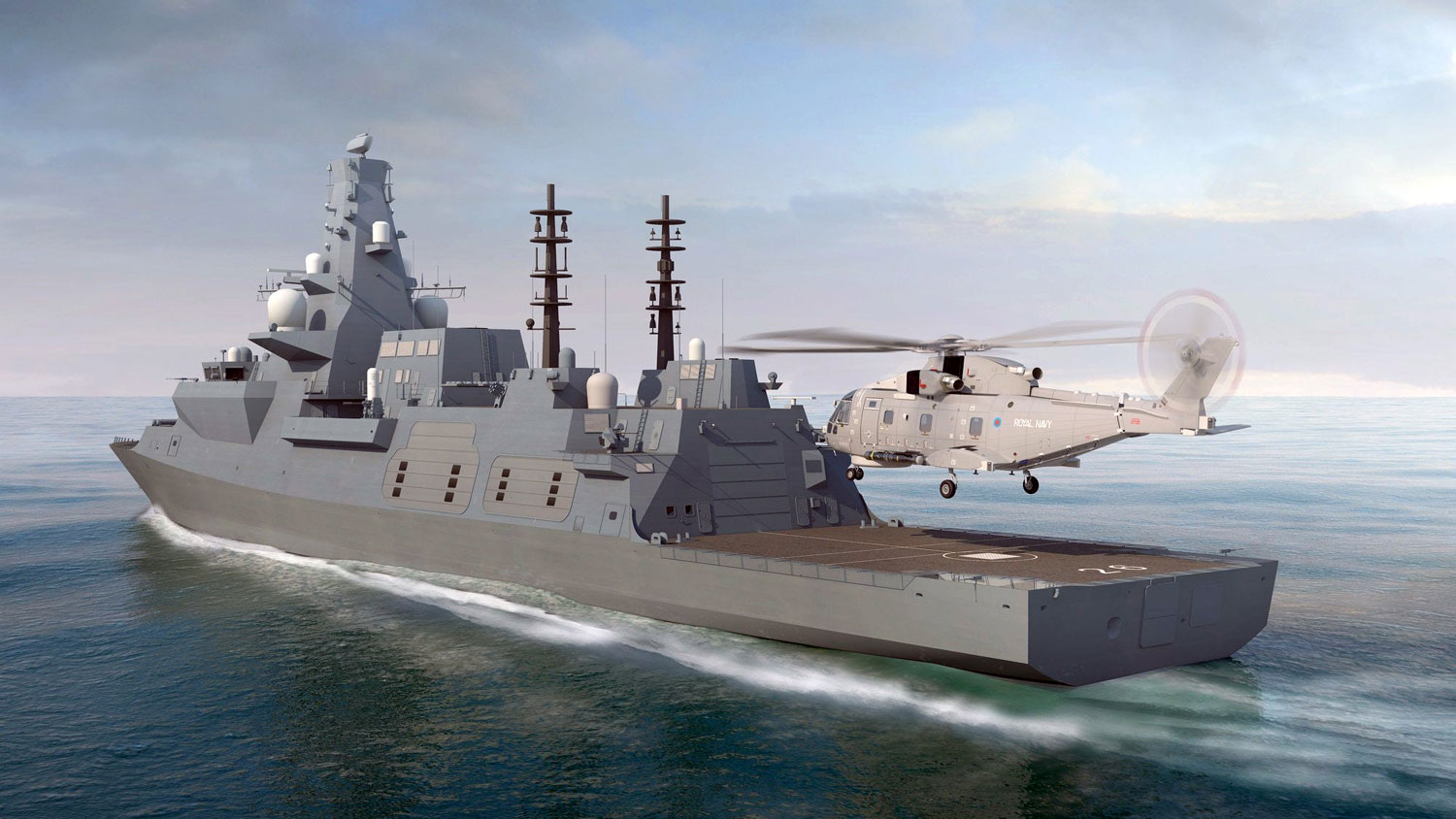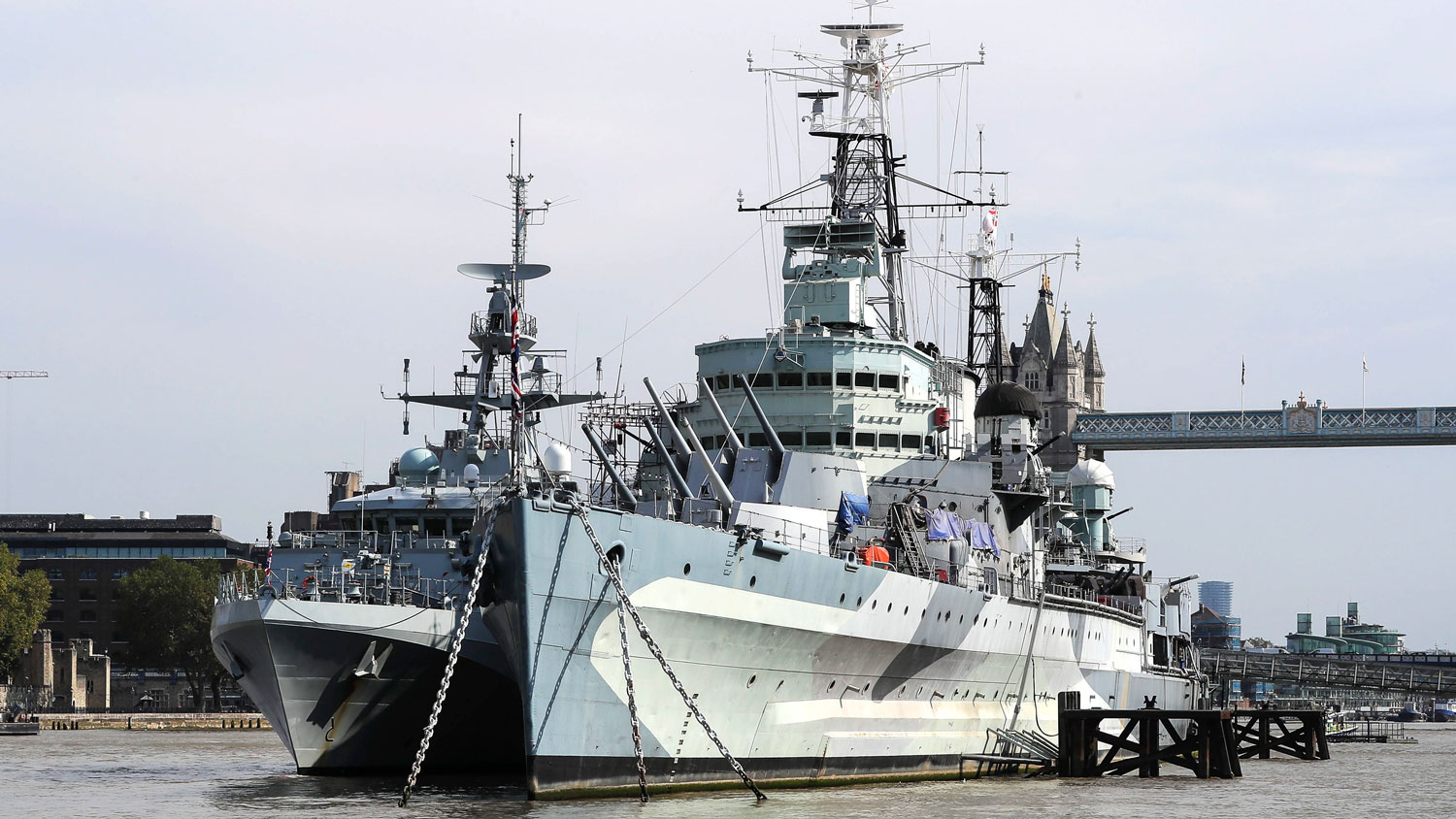
HMS Belfast, the Town-class London landmark that fired some of the first shots on D-Day

During the Second World War, HMS Belfast – the largest of the Royal Navy's Town-class light cruisers – saw action in the Arctic and the Far East, and fired some of the opening shots on D-Day.
After 25 years of active service, the historic warship became a maritime museum on 21 October 1971 and is now permanently moored on the River Thames near Tower Bridge in London.
The iconic vessel draws more than 300,000 visitors each year who climb up and down her numerous flights of stairs to visit all nine decks – from the flag deck to the orlop – to hear crew members' stories and enjoy multi-sensory interactive experiences.
Second World War service
HMS Belfast is so large that you can almost lie Big Ben's clock tower along her deck twice, and was once home to about 950 sailors.
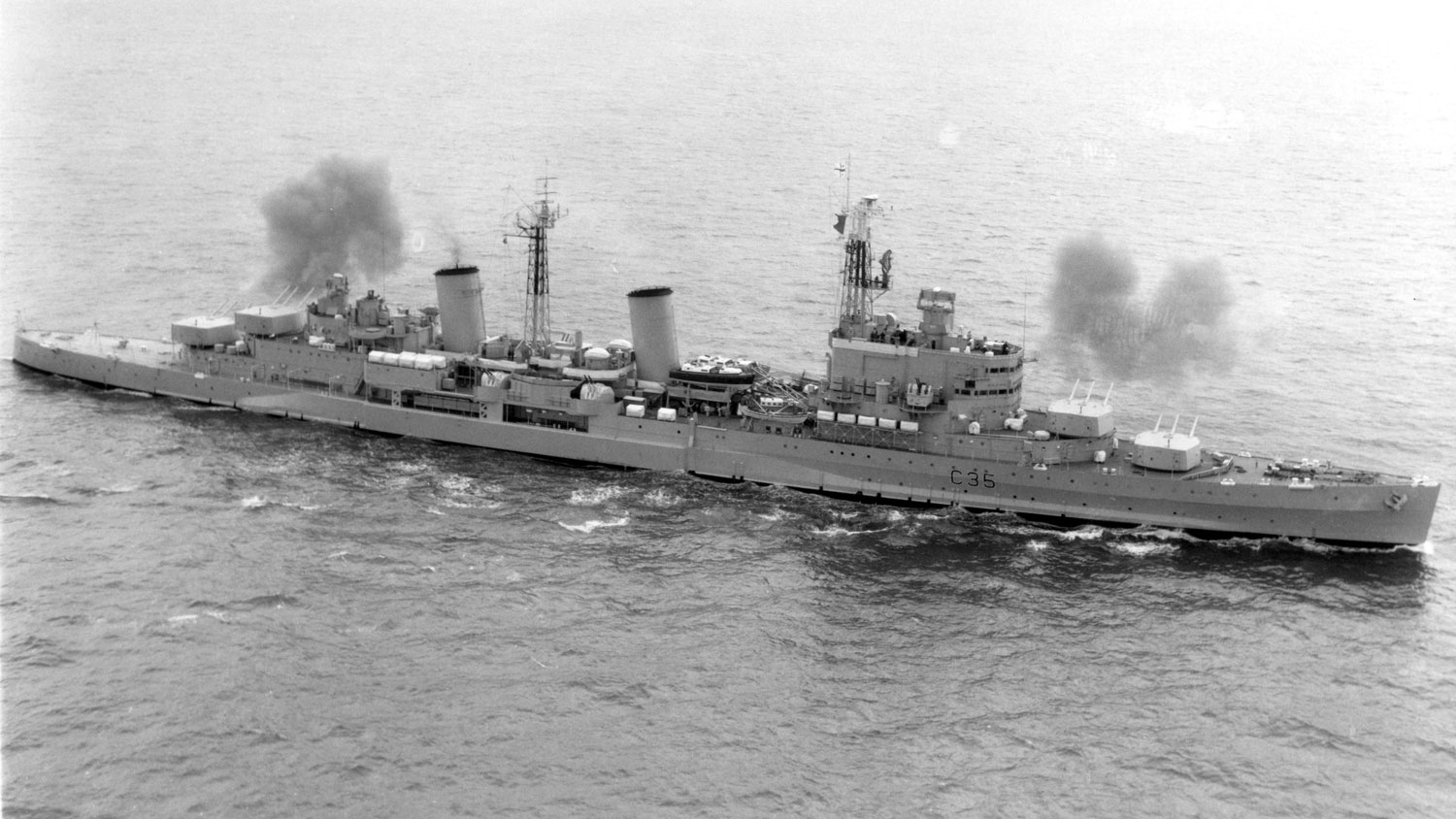
Today's visitors might see the ship as being outdated compared to her modern-day counterparts, but during her period of active service, HMS Belfast was state-of-the-art with her own bakery, Naafi canteen, post room and radio station.
The ship also had a modern medical centre which was staffed by three surgeon officers and six medical orderlies.
So advanced was the sick bay that the beds pivoted so they remained level while the ship rolled from side to side on the choppy open seas.
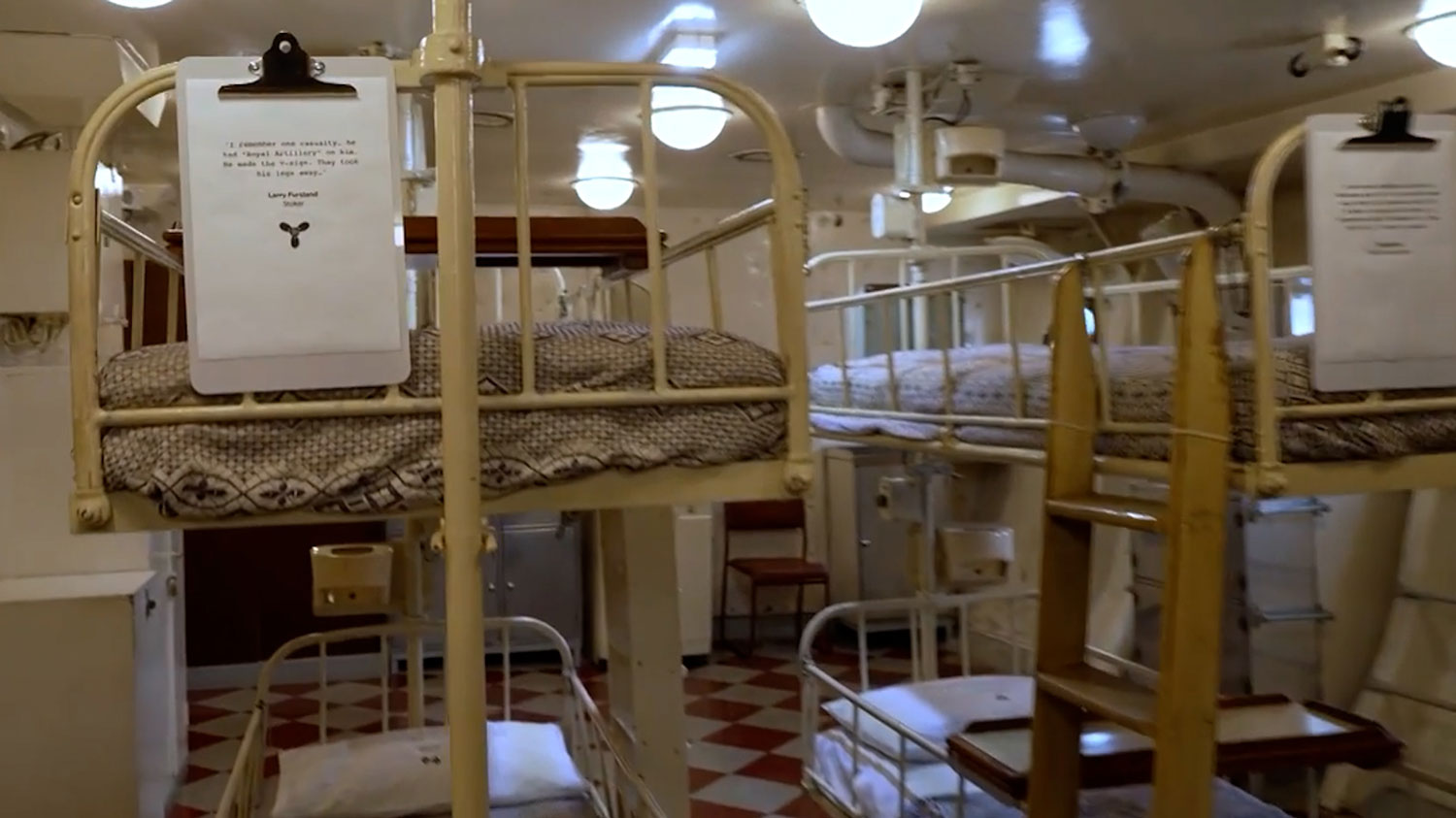
The Arctic Convoys
HMS Belfast and the men who served on board played a vital role in protecting the Arctic Convoys – the routes that carried supplies, equipment, weapons and ammunition to help the Soviet Union in its fight against Nazi Germany.
From August 1941 until the end of the Second World War, thousands risked their lives to sail from the UK to the USSR on board ships such as HMS Belfast.
The Arctic Convoys were vital in supporting the Eastern Front, but the men faced treacherous, freezing conditions on the route which was described by Prime Minister Winston Churchill as the "worst journey in the world".
The convoys successfully delivered about four million tonnes of supplies to the Soviets, but that success came at a deadly cost.
Of the tens of thousands of men who sailed in the convoys, around 3,000 died, making it the deadliest maritime campaign of the war.
Many of the surviving veterans have been awarded the Russian Medal of Ushakov for the part they played in the Arctic Convoys on board HMS Belfast.
Opening shots on D-Day
During the Normandy landings, Winston Churchill planned to watch the operation in person from the bridge of HMS Belfast.
However, he decided against the idea when King George VI offered to join him, a risk Churchill was not willing to take.
On the day itself, 6 June 1944, HMS Belfast's role was that of the flagship of Bombardment Force E.
Her mission was to support the troops landing at Juno and Gold beaches.
Some reports say HMS Belfast was the first to open fire on D-Day, however she was pipped to the post by veteran battleship HMS Warspite, which opened fire at 05:23.
According to Lieutenant Peter Brooke Smith's notes from the day, the vessel opened fire four minutes later "with full broadside to port".
HMS Belfast spent 33 days supporting the landings, during which she fired more than 4,000 6-inch and 1,000 4-inch shells.
In the end, HMS Belfast became one of just three surviving ships that gave fire support to the Allied forces during the Normandy landings.
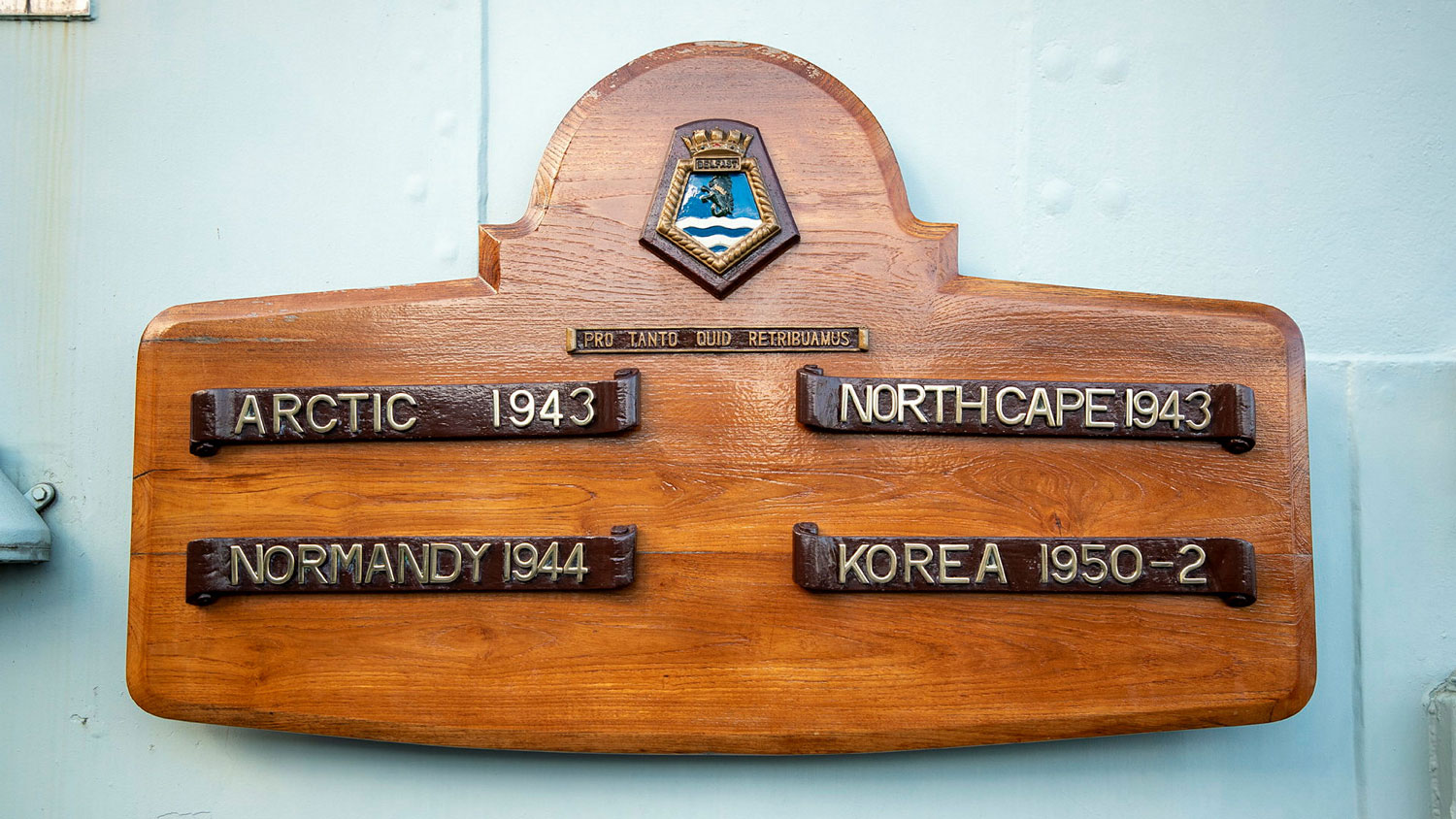
Battle of North Cape
HMS Belfast's most famous battle honour was the Battle of North Cape which saw her join HMS Norfolk and HMS Sheffield in the sinking of German battlecruiser Scharnhorst on 26 December 1943 before it could attack an Arctic Convoy.
With HMS Norfolk badly damaged and HMS Sheffield suffering from engine problems, at one point HMS Belfast was pursuing the Scharnhorst alone.
Tim Lewin of the HMS Belfast Association explained the vessel's role on Boxing Day night in 1943, saying: "Belfast played an absolutely vital role because she found Scharnhorst.
"It was totally dark, the Arctic night. It was very, very rough weather - pretty much constant snow.
"Had they not found the Scharnhorst before she reached the convoy, keeping in mind she came within 20 miles, it was absolutely critical that she was found."
After the Second World War
Following Japan's surrender on 15 August 1945, HMS Belfast deployed to support the rescue of Allied nationals held in Japanese internment camps in China.
Along with HMS Argonaut, Belfast arrived in Shanghai a month later for the repatriation of British civilians.
During this deployment, the crew held a party for British children who had spent years living in Japanese internment camps.
Barely surviving on very little food, living in appalling conditions and having to endure regular bombing raids, these children suddenly found themselves presented with cake, chocolate and the opportunity to experience unbridled joy.
Naval ratings entertained children with a rope swing on the upper deck of HMS Belfast, while others were swung in an improvised swing made from a crate suspended from the ship's crane.
One of the children, 11-year-old Ian Pearson, enjoyed the party so much that he was inspired to join the Royal Navy later in life.
HMS Belfast remained in the Far East on peacekeeping duty until 1947.
The vessel returned to the Far East in 1949 and served in the Korean War from 1950-1952.
Since 1973, City of London Sea Cadets have met on board HMS Belfast twice a week.
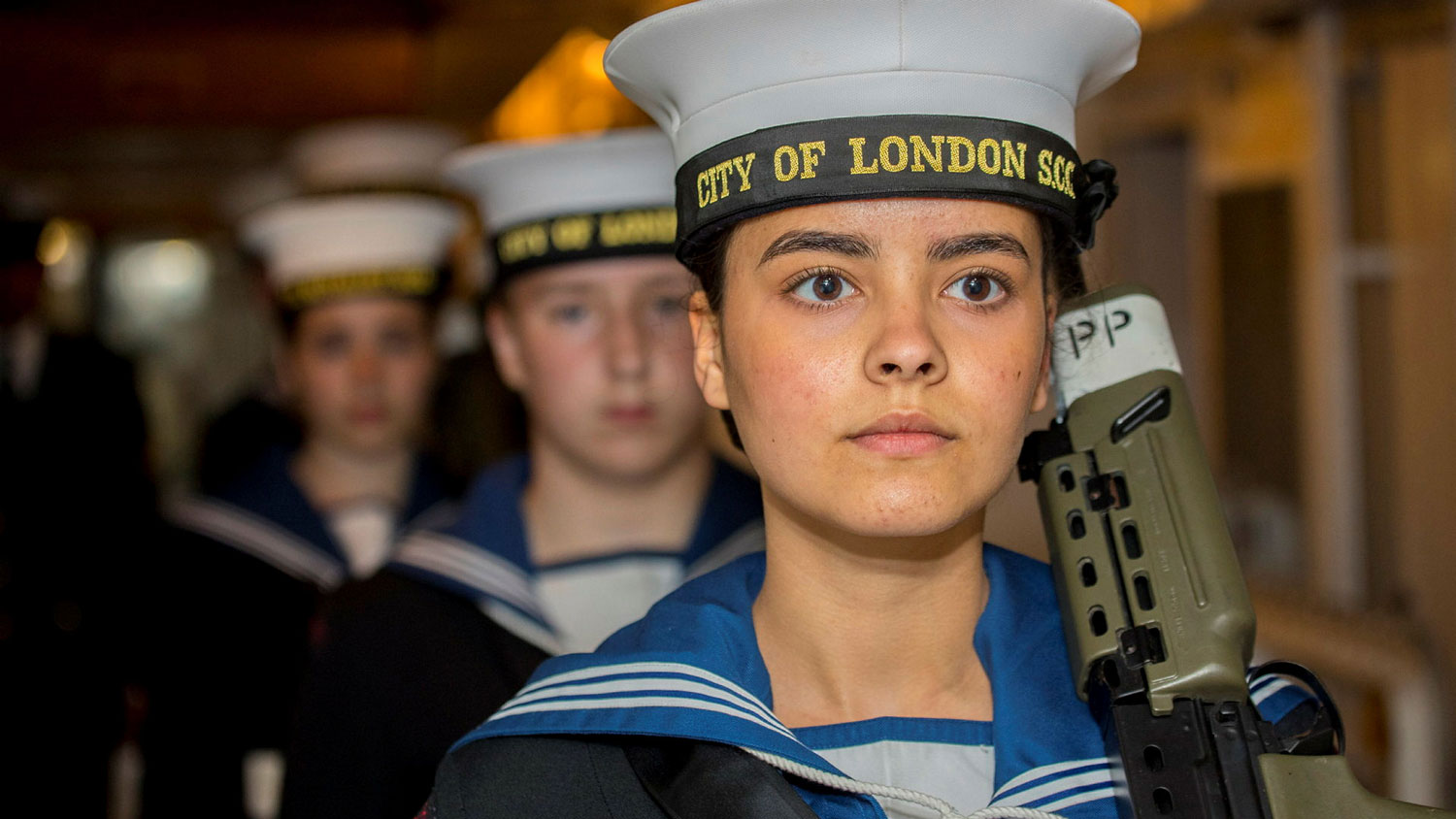
Saved from the scrapheap
At the end of HMS Belfast's operational life, her next destination upon decommissioning was meant to have been the scrapyard.
In 1967 the Imperial War Museum (IWM) was keen to turn the vessel into a permanently moored museum, but by 1971 the Government confirmed that it planned to scrap HMS Belfast.
However, some were still determined to rescue the warship from the hands of the shipbreakers.
Rear Admiral Sir Morgan Charles Morgan-Giles, the captain of HMS Belfast in 1961-62, led the HMS Belfast Trust, a group of people who campaigned to preserve her.
In January 1978, Shirley Williams, the then-Secretary of State for Education and Science, agreed that HMS Belfast should be taken over by the Imperial War Museum as the vessel was a "unique demonstration of an important phase of our history and technology".
The HMS Belfast Trust was merged with the Imperial War Museum in 1978, at which time the ship became the IWM's third branch.
Honouring the bravery of HMS Belfast's finest
Despite the floating maritime museum welcoming hundreds of thousands of visitors every year, HMS Belfast has found the time and space to host several medal ceremonies and memorial services over the decades.
The prestigious Légion d'honneur medal was presented to four D-Day veterans in HMS Belfast's Ward Room in February 2019.
The Royal Navy veterans were awarded France's highest honour for their service in helping to liberate the country.
Since 2014, veterans of the treacherous Arctic Convoys of the Second World War have received Medals of Ushakov during ceremonies on board HMS Belfast.
The few remaining survivors were given the medal for their courage in delivering vital supplies to the Soviet Union.
HMS Belfast held a memorial service in May 2022 marking the 80th anniversary of the sinking of her sister ship, HMS Edinburgh.
The fellow Town-class light cruiser was sunk after being hit by a torpedo in April 1942.
The granddaughter, grandson and great-grandson of Commander Dathan, HMS Edinburgh's Chief Engineering Officer, took part in the memorial.
Cdr Dathan was mentioned in Despatches for his bravery during the attack on HMS Edinburgh which, after great efforts to tow her to safety, resulted in her sinking and the death of 60 of the ship's crew.
He then transferred to HMS Belfast and took part in the Battle of North Cape – for which he was awarded the Distinguished Service Cross – and the Normandy landings.
Cdr Dathan's service jacket is part of the IWM's vast collection of Second World War treasures that are preserved to remind us of the sacrifices made by Royal Navy personnel.
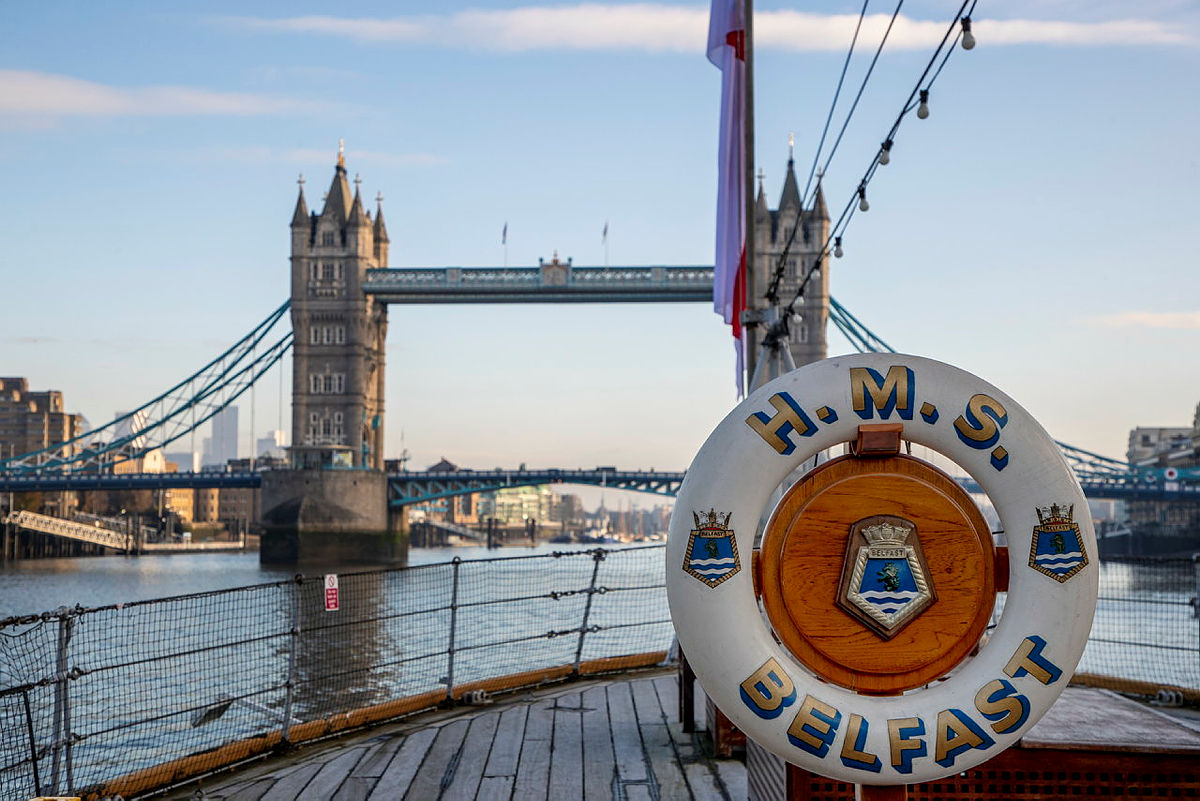
HMS Belfast in popular culture
HMS Belfast has starred in several TV shows such as the BBC's Outnumbered (The Family Outing) and Only Fools And Horses (He Ain’t Heavy, He’s My Uncle) and even starred in the background of a scene in Killing Eve.
Much to the delight of the bride-to-be, the vessel even became a wedding location for an episode of the BBC's Don't Tell The Bride.
HMS Belfast hasn't shied away from musical collaborations either.
The ship was the location for Depeche Mode's People Are People video in 1984, and 20 years later Eminem performed Like Toy Soldiers and Just Lose It as part of a Top of the Pops special on board the vessel.
Fans of video game World Of Warships will know that HMS Belfast was removed as a ship available to buy after statistics revealed she was "over-performing in competitive online battle modes".
The future HMS Belfast
The new HMS Belfast, described by the Royal Navy as being "designed to deliver manpower and capabilities to meet the challenges tomorrow may bring", is due to enter service in the mid-2020s.
One of eight new Type 26 frigates, the 21st century version of HMS Belfast will protect the UK's strategic interests and the country's nuclear submarines while delivering a high-end warfighting capability.
To avoid confusion, the original ship will be renamed 'HMS Belfast 1938', the year she was launched.
In September 2017, former defence secretary Sir Michael Fallon spoke about the future HMS Belfast, saying: "[HMS Belfast] and her sister ships will form the backbone of our Navy well into the 2060s, keeping us safe by protecting the country's nuclear deterrent and new aircraft carriers."
The original HMS Belfast continues to teach future generations about the sacrifices made by the men and women who dedicated their lives to the sea for our freedom.
